P.PSH.1285 - Alternative reproductive technologies
The ability to reduce generational interval would mean the industry is more agile and can meet social, environmental and economic demands.
| Project start date: | 19 June 2021 |
| Project end date: | 16 October 2024 |
| Publication date: | 29 October 2025 |
| Project status: | Completed |
| Livestock species: | Grass-fed Cattle |
| Relevant regions: | National |
|
Download Report
|
|
Summary
The purpose of this research was to:
(i) produce multiple copies of high-quality embryos
(ii) achieve IVP live-birth outcomes at a rate at least equivalent to current IVP procedures using intact (conventional) embryos
(iii) reduce the costs of livestock IVP processes thereby helping to improve uptake of the technology in the red meat industry
(iv) further leverage the ability of IVP procedures to rapidly upgrade the quality of livestock herds to generate commercial gain and help meet the increasing pressure on local and worldwide food needs and land management issues.
Objectives
This project researched three distinct embryo twinning methods:
1. Split and grow
2. Cut and grow
3. Unzip and grow.
The objective was to research and develop a method for embryo multiplication. One method exhibited good results in the early project stages. Due to these outcomes this method was the focus during the project and other methodologies were not further researched.
Key findings
This project has developed novel technologies for embryo multiplication, from which live calves have been produced. 15–20x more blastocysts could be obtained from a single embryo compared to current industry IVP standards. The heifers produced from ‘twinned’ embryos are now pregnant, demonstrating transgenerational fertility. Significant improvements in current embryo IVP processes have been made by development of media formulations that help to overcome developmental arrest.
Benefits to industry
This embryo multiplication technology represents the future for embryo production for the livestock industry. If successful, it will drive down costs of producing high-quality animals which will greatly accelerate penetration into markets worldwide. In turn, this will accelerate the production of high-volume, high-quality livestock products to meet growing global demand.
MLA action
There is no further MLA action required.
Future research
The results of this research show proof-of-principle for Nbryo embryo twinning technology in the bovine system. Key future goals include:
(i) improving pregnancy/live-birth rates to match industry standards using standard IVP techniques with intact embryos
(ii) successfully generating higher numbers of blastomeres in culture which maintain totipotency
(iii) incorporating automated systems to reduce and improve the handling of multiplied blastomeres to produce new embryos
(iv) demonstrating proof-of-principle of these technological approaches in other livestock species (e.g. sheep goats, etc.).
More information
| Project manager: | Sarah Butler |
| Contact email: | reports@mla.com.au |
| Primary researcher: | NBRYO Pty Ltd |


